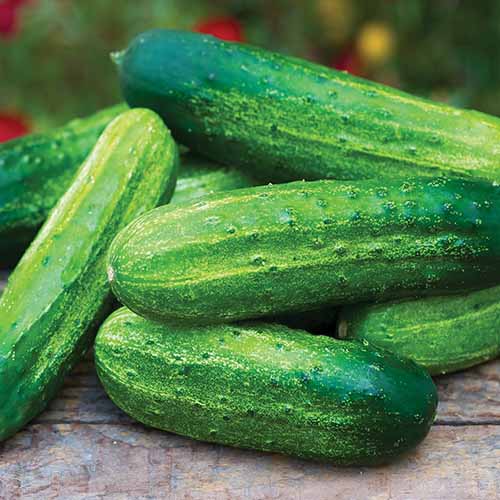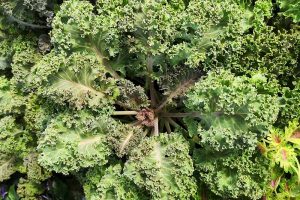There are two main reasons why I don’t like to see holes in the cucumbers I grow in my garden.
The first was best stated by a work friend’s wife many years ago.
She was complaining about chard that had been gnawed on by slugs, but her chosen phrase applies here, too: “I don’t like to eat anything that something else has eaten first.”
And then there’s the issue of limiting damage. Pretty much any time a pest or growing condition causes a hole in one cucumber, there’s a good chance the damage will extend to other fruits on the same plant, and even to other vegetables in the garden.
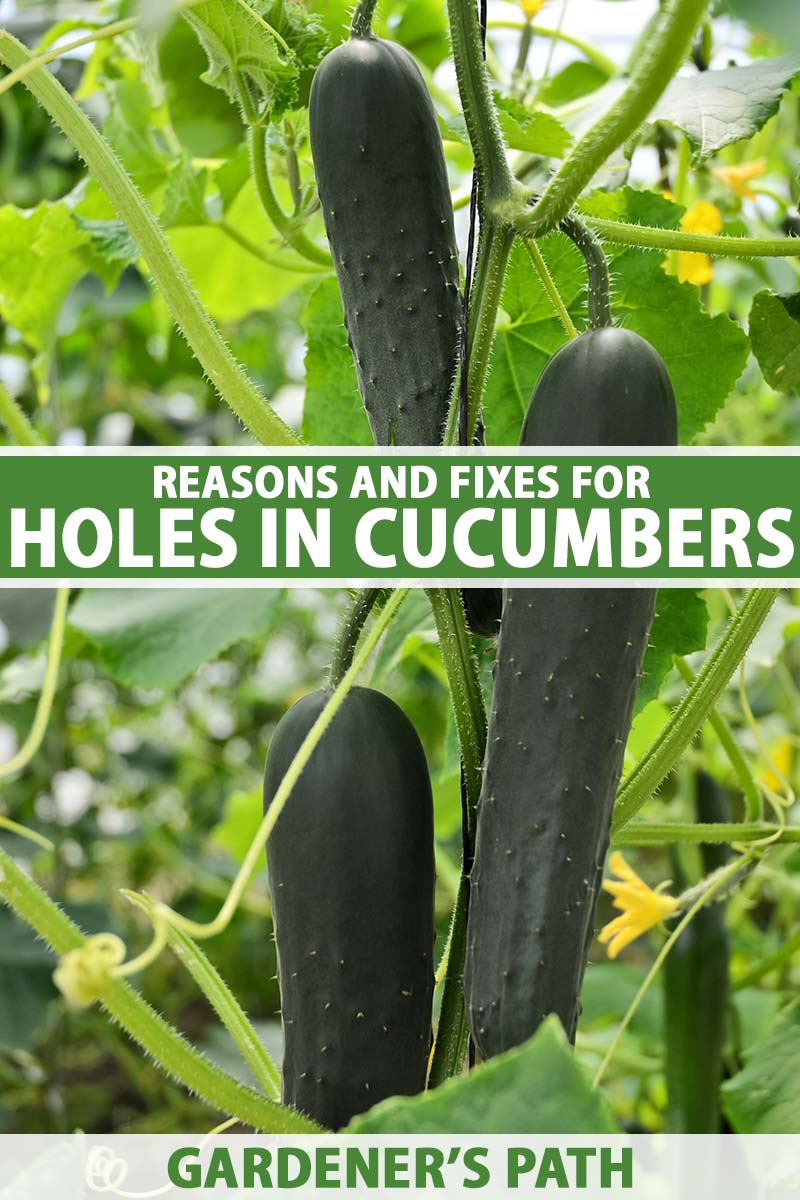
We link to vendors to help you find relevant products. If you buy from one of our links, we may earn a commission.
So, much as I would like to pretend like I simply didn’t spot it when I see the evidence of an assault on one or more of my cukes, I always follow up.
To help you do the same if you find yourself in a similar situation, I’m going to run through a few of the probable causes, along with some potential solutions.
And then, I’ll share a few ways to prevent these issues in the first place. When it’s possible, I mean.
There are plenty of times when your precious vegetables may succumb to ailments that you can’t eliminate, and cucumbers are no exception.
Here’s what I’ll cover:
What You’ll Learn
What Causes Holes in Cucumbers
While it is possible to create a hole in a cucumber with your fingernail, and occasionally wildlife like box turtles will take a chomp, those are rare occurrences, and easily dealt with.

Far more worrisome are the punctures and pockmarks created by various bugs, and a few types of fungi. Here are the most common ones to watch out for:
Pickleworms
Can I just pause to say yuck?
Pickleworms tunnel into cucumbers. You may need to look no further to find your culprit.
And they’re pretty icky as they go about creating these holes. The havoc-wreakers are the larvae of a moth, Diaphania nitidalis.
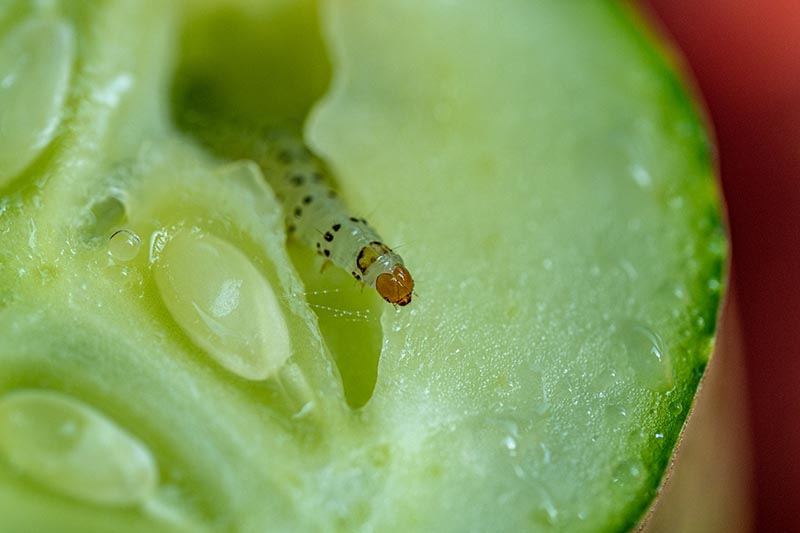
These charmers adore fruits, burrowing inside and pushing waste back out. It’s known as “frass,” and that jelly-like goo might be coming out of the hole you spotted.
I hate to even bring this up when you’re looking for solutions, not lectures. But the best defense against pickleworms is accomplished through preventive measures, like row cover placement and planting early. I’ll tell you more about that in a minute.
When you already have an infestation on your hands, do your best. First, make sure to destroy any damaged fruit, so they don’t have a place that’s readily available to hang out and multiply.
Also, crush any leaves on the plant that are kind of rolled up. Inside, if you cared to look, you’d find the pupae, just waiting to become moths and lay eggs of their own.
If you must, you can spray with an insecticide specifically designed to handle pickleworms.
If you’ve got a lot of them, you may want to skip this procedure and just plant again next year. You risk killing pollinators with even an approved insecticide, though you can mitigate the damage by spraying in the evening, when bees won’t be impacted.
One possibility is neem oil extract, applied once a week starting in early summer.
Slugs and Snails
If you’ve had problems with slugs or snails, know that they’re happy to eat cucumbers on the vine. Heck, as you probably know all too well, they’ll eat pretty much any type of produce – leaf, stalk, or flower.
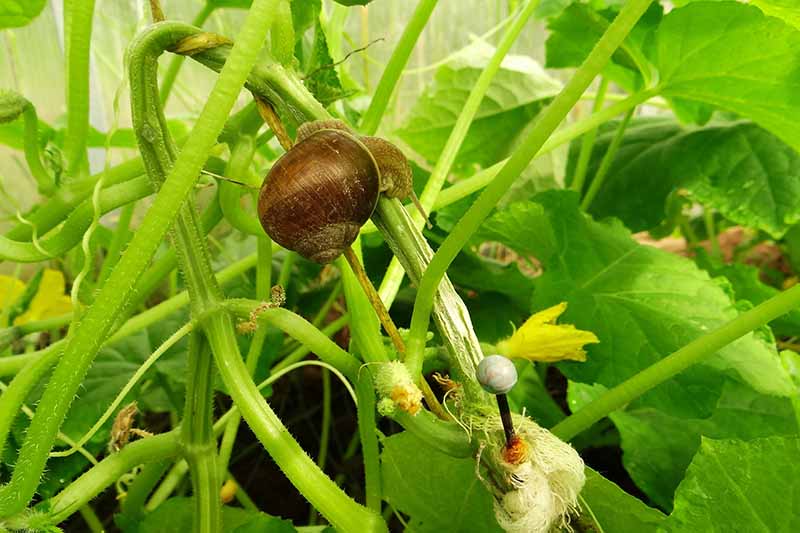
It may not be the top item on the slug menu, but they will drill holes in mature and immature cucurbit fruits. In my garden, they’re just as likely to sort of gnaw on the exterior of the skins, leaving that shiny telltale trail in their wake.
You may be able to hand pick them if they’re doing too much damage and you’re willing to head out at nighttime, their preferred dining hours.
Or you may want to sprinkle slug bait or employ diatomaceous earth. Learn more about handling slugs and snails in the vegetable garden in our guide.
Belly Rot
You’ll know your fruits have fallen prey to belly rot when the infected portions are bruised and rotten-looking. The skins will have sunken, irregular spots that are in essence a type of hole, but you may notice other signs of damage first.
A soil-borne fungus, Rhizoctonia solani, causes belly rot in cucurbit fruits. It overwinters in soil or infected plant debris, and thrives in humidity – particularly when plants don’t have enough space for proper air circulation.
The cucumber may look a little blotchy at first, and will completely succumb to this fungus within a day.
According to Emily Pfeufer, plant pathologist at the University of Kentucky, it’s best to immediately remove any plants you spot with infected fruit, disposing of them as far away from the garden as you can.
Scab
Scab is caused by the fungus known as Cladosporium cucumerinum, and it creates tiny sunken spots on your lovely cucumbers.
You can differentiate this disease from belly rot or the damage caused by pickleworms because scab also involves a greenish coating of spores.
This one is a negative for the whole plant, not just a fruit or two. It can mar the foliage and stems as well, and encourages secondary infections that might rot the fruit.
As with belly rot, it’s a good idea to remove any scab-infected fruits or stems, pronto. Dispose of any infected plant parts in the trash, not the compost, to avoid providing a breeding ground for the pathogens in yet another area of your yard or garden.
You may want to try a fungicide once you’ve spotted scab. Your local extension agent will have recommendations there, and I’ll share a few ways to prevent scab from recurring if you read on.
Should You Try to Salvage Them?
That frass the larvae produce is pretty unappealing, so you may not even be tempted to eat the rest of a pickleworm-damaged cuke.
While some die-hards will just cut off the affected bit and consume the rest, I prefer to put the hole-ridden part in the trash and the rest in the compost.
One of the nicest things about growing your own cucumbers is that the vines and bushes produce so generously.
This means you can probably spare one of the fruits, or even a dozen or more, when you notice that an insect pest or gastropod has beaten you to the harvest, right?
If the damage is due to scab or belly rot, on the other hand, I make sure to dispose of the whole kit and kaboodle. The possible spread of pathogens is not something to play around with.
Preventive Measures
It’s amazing how often weeding consistently, sanitizing your implements, providing good air circulation, and growing the healthiest plants possible will help you to avoid negative outcomes in your vegetable garden.
This is one of those times. If you want to prevent holes in your cucumbers, getting back to those basics is the best approach.
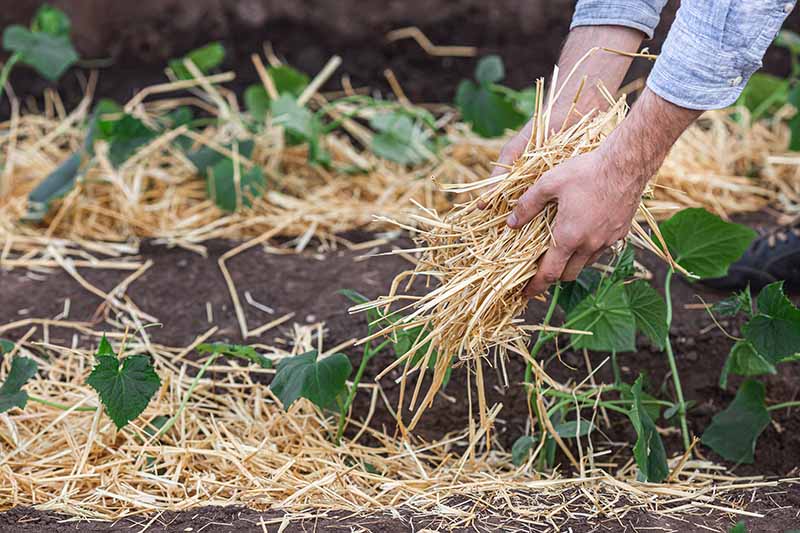
Weeding often, and clearing plant debris at the end of the season, deprives slugs and insect pests of a place to live or overwinter, for example.
Keeping hands, shoes, and tools sanitized will halt the spread of harmful pathogens via contact or soil.
Plant pathologist Emily Pfeufer says the best preventive measures for belly rot include creating a “physical barrier, such as black plastic mulch or dry, rolled straw, to minimize fruit contact with soil.”
It’s also a good idea to plant in well-draining soil, to avoid the overly wet conditions that encourage harmful fungal pathogens and moisture-loving bugs.
To steer clear of scab, Pfeufer adds, it’s critical to plant resistant varieties and also be sure to purchase seeds that are pathogen-free.
There are also a couple of good strategies you can employ that are specific to growing cucumbers and other cucurbits like summer squash as well.
If you live in an area where summer seems to arrive before you know it, recognize that you’ll have a shorter window of time available than gardeners in other regions might before pickleworms get established.
Because they appear in early summer in warm areas, it’s a good idea to get your plants going as early as possible.
Be sure to plant as soon as the temperatures are warm enough, or even start seeds indoors in biodegradable pots to get a jump on the season.
And consider choosing varieties that will mature quickly, or that you can harvest at a baby size. You can save almost three weeks by growing the cultivar called ‘Baby,’ for example.

Seeds are available from the Park Seed Store via Amazon.
It has three-inch fruits that are ready to pick 46 days after sowing, much faster than a slicer like ‘Marketmore,’ which takes 65 days before you can expect a harvest.
Even varieties that produce 10 to 15 days ahead of the typical cultivars can help you thwart the summer onrush of these burrowing larvae.
One good example is the pickling variety ‘Pick a Bushel,’ which produces in 50 days. Seeds for this one are available from Burpee.
In comparison, a cultivar like ‘Lemon,’ while wonderful for pickling, takes 65 days to fruit. This can give the pesky moths longer to become established and lay eggs in midsummer.
Also, be sure to use row covers early on. This will keep insects off your burgeoning plants, halting the part of the life cycle when they lay those eggs, enabling larvae to attack the fruits later.
Pickleworm moths are the most active three to five hours after sunset, so those are the crucial hours to keep row covers in place.
Just remember to remove covers in the morning each day once the vines or bushes begin flowering, so pollinators like bees can do their thing. Replace them afterwards, to prevent more bugs from starting broods on your plants.
Some types of moths pollinate vegetable plots at night.
This isn’t well-studied, but it’s worth noting that the covers will keep these out, even the beneficial ones that visit certain cucurbits in the evening. I consider this a small price to pay to protect the fruits.
The Hole Truth
Coping with these attacks on your C. sativus harvest is just part of the deal when you plant vegetables in a home garden.
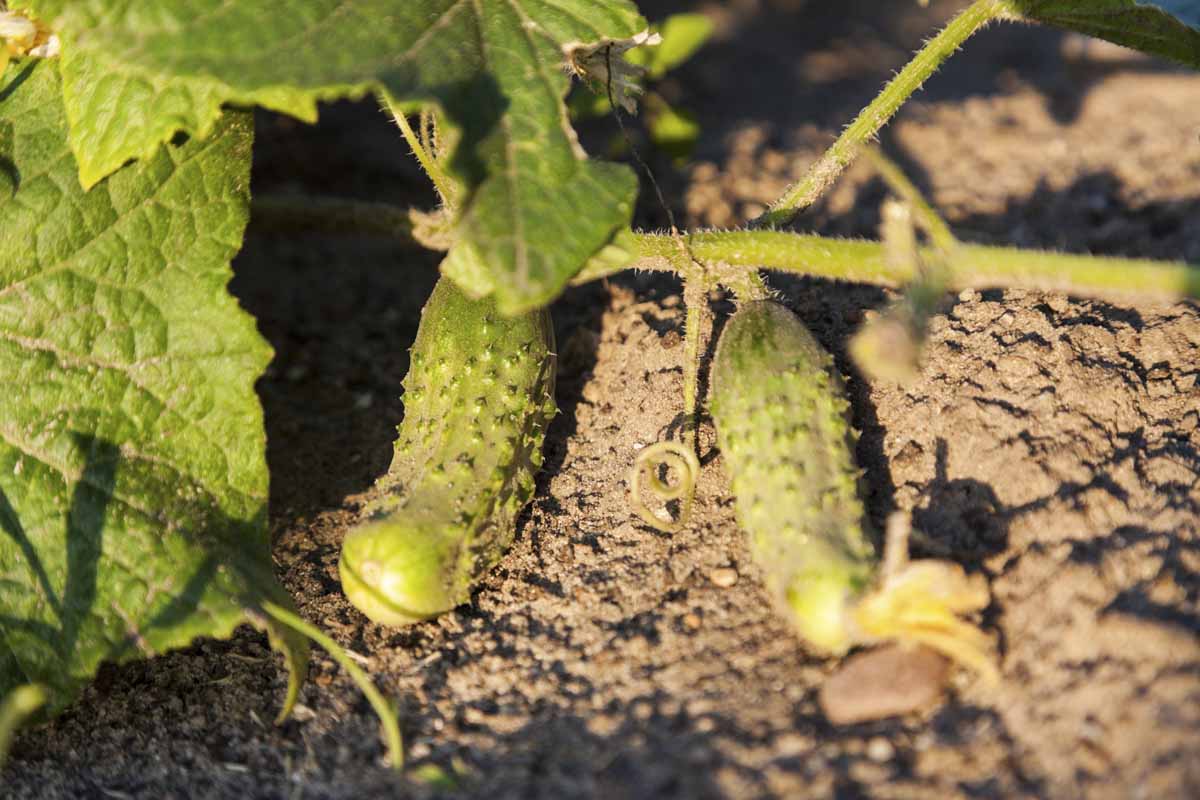
Thankfully, there are so many rewards to growing your own food that a little skirmish like this won’t take away too much of the enjoyment.
Speaking of which, do you have any lessons you’ve learned about holes in cucumbers to share? The comment section below awaits your input.
And whether you’re already growing these cucurbits or just considering joining the ranks, you’ll probably enjoy reading these cucumber guides next:
